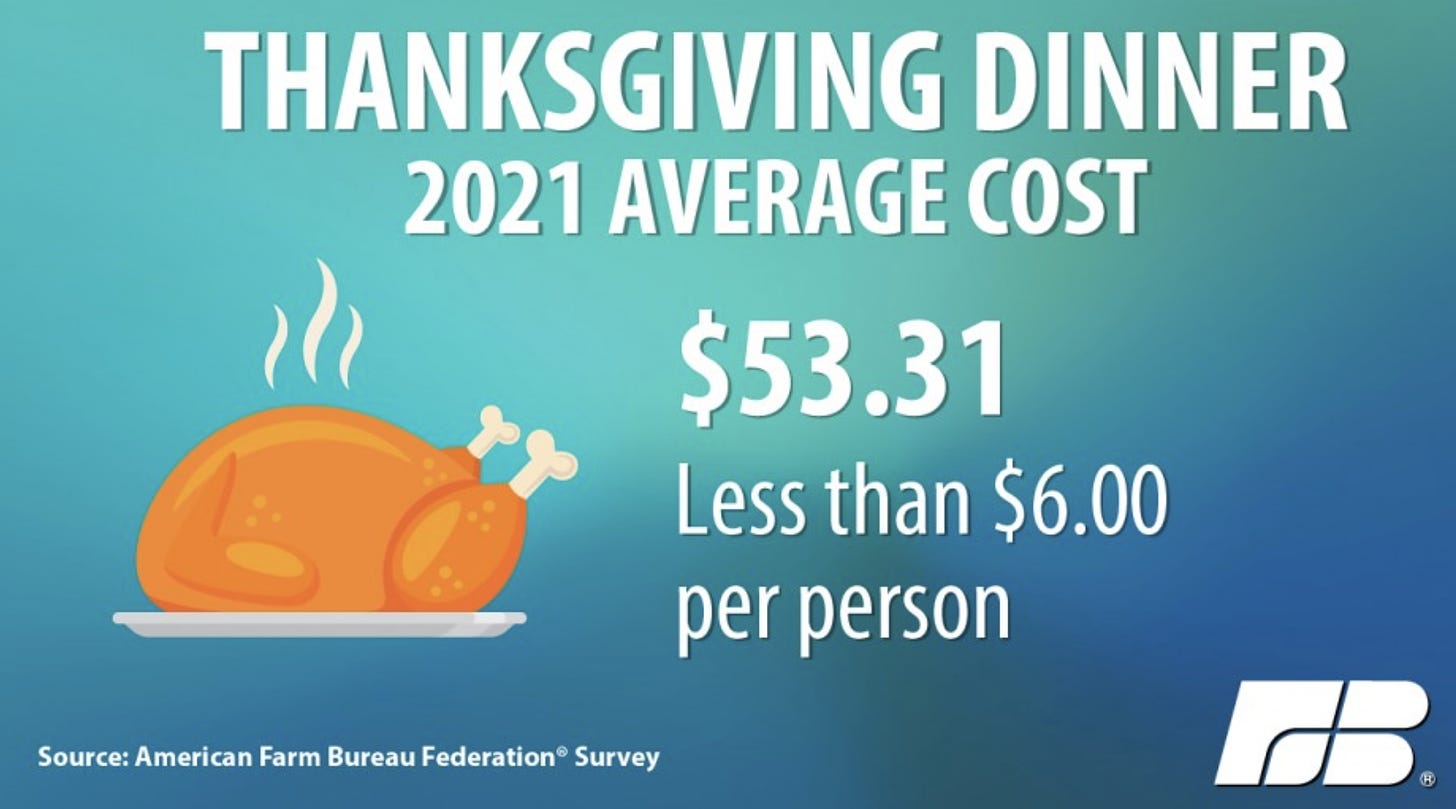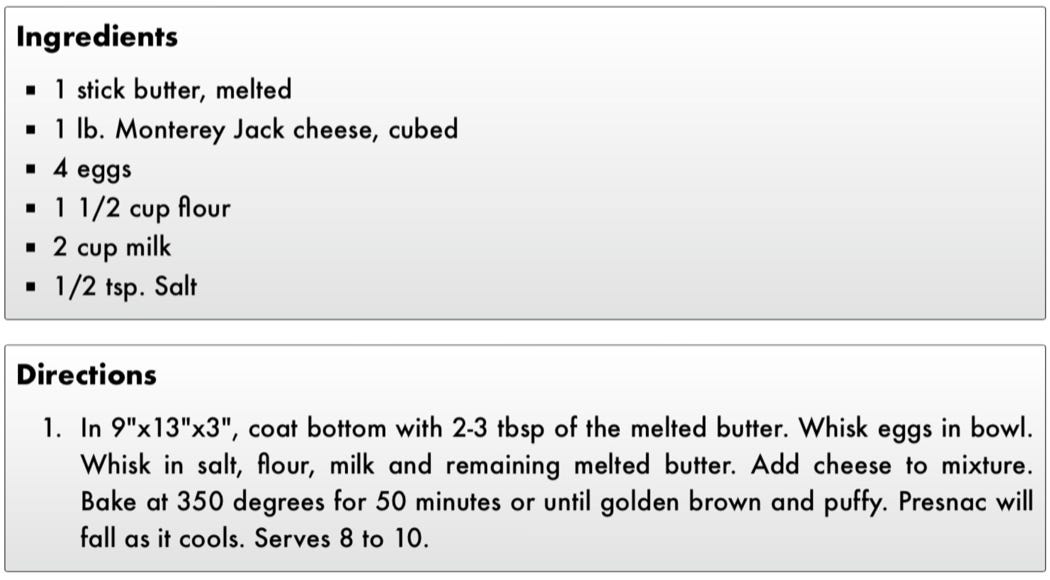For many of us, tomorrow is Thanksgiving. That means a full day of cooking followed by 30-40 minutes of overeating with friends and loved ones.
Like millions of Americans, I bought a turkey, fresh cranberries, milk, eggs, pecans, etc. in preparation for the big day. I’m only feeding a family of four this year, but it still adds up.
Each year, the American Farm Bureau Federation figures out exactly how much a Thanksgiving dinner is likely to cost. They’ve been gathering data and reporting on the average cost of this iconic meal for the last 36 years. This year, the Farm Bureau reports that Americans can expect to spend $53.31 on a Thanksgiving dinner that would serve ten people. That’s up 14% from last year’s average of $46.90.
With so much focus on inflation, it’s no surprise that the 14% jump has garnered a lot of media attention. It’s tempting to interpret it as unequivocal evidence of sharply rising consumer hardship. And make no mistake about it, rising prices—including food, gas/energy, housing, child care—are clearly a serious issue for millions of families across the US and around the world.
But maybe—at least when it comes to the cost of a Turkey feast—things aren’t quite as bad as they seem. Here’s Mark Perry’s take.
The fact that a family in America can celebrate Thanksgiving with a classic turkey feast for ten people for just over $5 per person and at a “time cost” of only two hours of work at the average hourly wage for one person means that we really have a lot to be thankful for on Thanksgiving: an abundance of cheap, affordable food despite the challenges of the pandemic, supply chain issues, and rising energy prices. The average American earns enough money by the time of his or her morning coffee break working on just one day to be able to afford the cost of a traditional Thanksgiving meal for ten. Compared to 1986, the inflation-adjusted cost of a turkey dinner today is 26% cheaper, and 37% cheaper measured in “time cost” for the average worker. Despite all of the hand-wringing and alarm bells about inflation, this year’s Thanksgiving dinner in America is among the most affordable of the past 36 years relative to our income and relative to the cost in past years.
And now for something completely different. Three times a year—Thanksgiving, Christmas, and Easter—I make a dish that my mother served at every big holiday gathering. It’s a Serbian dish that goes by various names, including Presnac, which is what she always called it. It’s super easy and really delicious!
You’ll want to bake it on the middle rack (and remove any upper racks) to allow plenty of room for the edges to puff up nice and high. And don’t dismay when they inevitably collapse after you remove the pan from the oven. Here’s one I made on a previous holiday.
In recent years, I started using 1/2 Monterey Jack and 1/2 Pepper Jack to give it a little kick. Unless you have to, don’t use skim milk. I use 2% and it works just fine, though some people use whole milk. You can also add a couple of tablespoons of plain cottage cheese. I never do, but my mother often did. I think she skips it these days.
After our feast, we’ll snuggle up and watch the greatest Thanksgiving movie of all time—Planes, Trains & Automobiles.
Thank you, as always, for reading The Lens. I’m grateful to the many subscribers who allow me to share my thoughts on economics and economic policy (along with the occasional recipe).
May all your turkeys be moist!








Have a great day with family and food.
Thank you & Happy Thanksgiving !